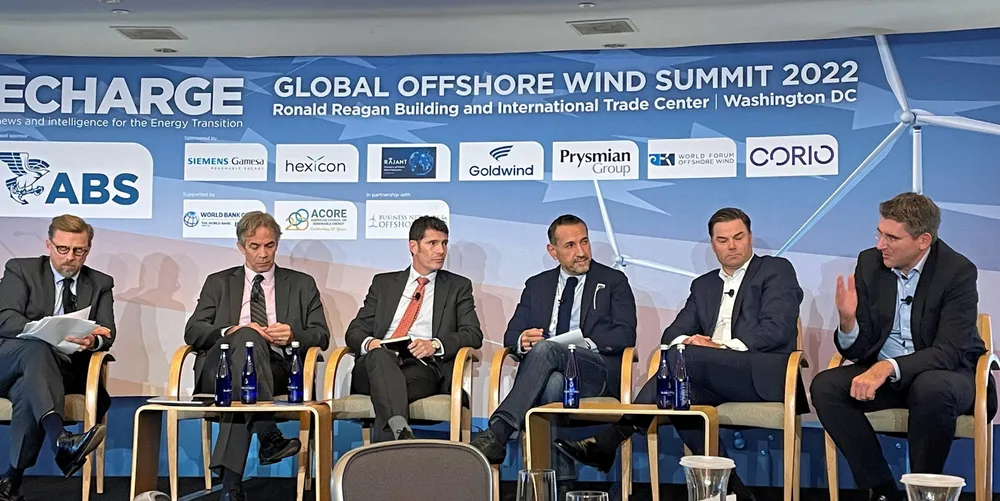Face 'new reality' on costs or offshore wind growth in peril: Siemens Gamesa's Becker
Turbine giant's offshore CEO tells Recharge Summit that recalibrating industry for current challenges is 'first things first' if it is to meet massive future expectations

Becker added that fixing the current challenges is “first things first” for the offshore wind sector ahead of that level of capacity explosion.
Like all western OEMs, Siemens Gamesa has faced a drastic squeeze on its margins over the last 18 months, along with a large part of the wind power supply chain. There have also been question marks over the viability of projects whose economic basis was drawn up before what the Siemens Gamesa executive described as the shift to “a different world” of spiraling costs.
“It’s not an easy topic because it comes with a new ton of problems [but] this new reality has to be appraised and taken into account, because… otherwise there is no sustainable industry,” he said, adding that new ways urgently need to be found to hedge and spread the risks facing various players in the sector.
“There might be projects that cannot cope with this, but others can,” he noted. “The sooner we appraise the topic and work on it the better. We can overcome this challenge but we need to recognise it.
“Everybody needs to talk – from regulators to OEMs to developers – to come together and cope with that new reality. We have not really reached that stage.”
Becker was joined on the panel by Hakan Ozmen, EVP for projects at Prysmian, who told the summit that early engagement and flexible collaboration is now a must for developers and supply chain players alike, given the cost increase “surprises” projects are facing.
“You cannot ignore your supply chain right now,” Ozmen said, adding that companies like Prysmian are also making crucial investments in facilities, for example in a US market that was lagging behind Europe, and technologies such as the next-generation 525kV systems that will enable huge amounts of power to flow from multi-gigawatt future offshore wind projects.
'New markets a must'
The need to engage fresh markets to underpin massive global expansion was stressed by Guillermo Martinez-Navas, head of Americas and new markets for pure-play offshore wind development giant Corio Generation.
Martinez-Navas said Australia has helped its cause by sending a “strong early signal” that it had ambitions in offshore wind, with a timetable of policy to back it up.
Sean Whittaker, co-lead of the ESMAP Offshore Wind Development Programme at the International Finance Corporation, the private sector financing arm of the World Bank Group, told the panel that the IFC had seen a huge ramp-up in interest in developing offshore wind resources in emerging nations that are realising “what an incredible resource they’ve got”.
Whittaker said “ten different countries will do offshore wind for ten different reasons” – as he cited Colombia as an example of a nation that initially saw the sector as a way to address constraints with onshore renewables and “turned out to have one of the best offshore wind resources that’s ever been seen”, leading to a massive uptick in policy ambition.
By contrast, Brazil's priorities include using the sector to help manage variability of hydropower and Vietnam's are heavily focused on independence, explained Whittaker.
The role of innovation in key technologies was stressed by Kristian Johansen, CEO of energy data and geoscience specialist TGS, who said offshore wind can benefit from long-term experience built up by companies such as his in the oil and gas industry.